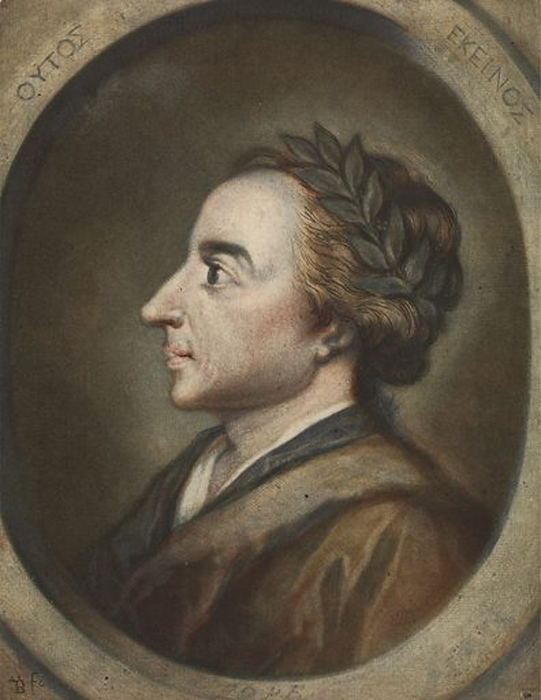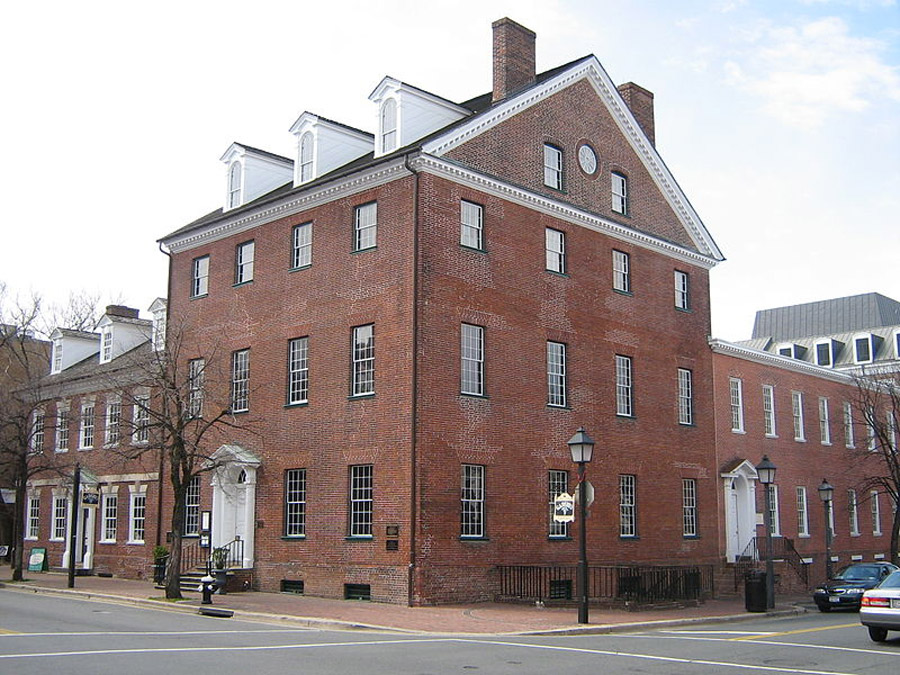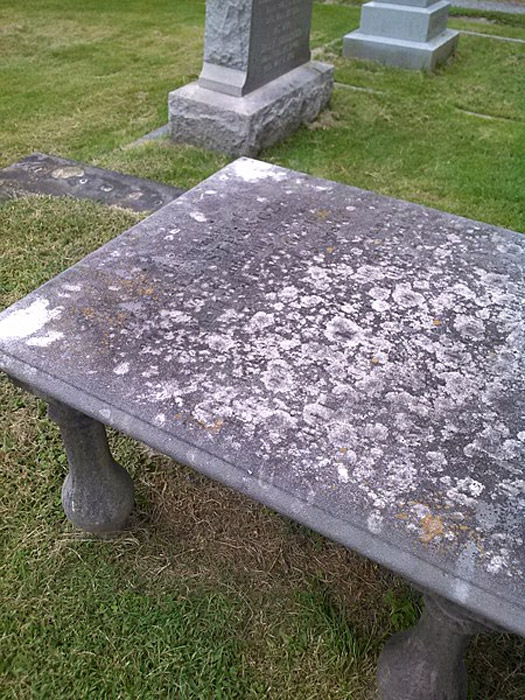Nestled in the heart of the city of Alexandria, Virginia, in the eastern United States, can be found St. Paul’s Episcopal Church. There, in the quiet graveyard shaded by trees lays a grave.
Nobody knows who is in the grave, with the enigmatic tomb only referring to the body within as the “female stranger”. It has no name attached to it, and after the dedication the only other words on the tomb are a poem by Alexander Pope, called “Elegy to the Memory of an Unfortunate Lady” from the 18th century, and a quote from the Bible.
The poem itself talks of a grieving husband that sealed the coffin and dealt with the death in secret. This has sparked debate and discussion around the woman’s death and her identity. What is there to be known about this mysterious female stranger and what is the legend that surrounds it?
Poetic Clues
The only direct written evidence that exists is the inscription found on the grave. It reads:
“To the memory of a Female Stranger whose mortal suffering terminated on the 14th day of October, 1816 Aged 23 years, and 8 months. This stone is placed here by her disconsolate Husband in whose arms she sighed out her latest breath and who under God did his utmost even to soothe the cold dead ear of death.”
So much we know of the occupant. She died young in the first years of the 19th century and was interred and grieved by one who chose to call himself her husband. The extract from Alexander Pope offers little more, but perhaps something can be gleaned from the words:
How loved how valued once avails thee not
To whom related or by whom begot
A heap of dust alone remains of thee
Tis all thou art and all the proud shall be

Such “Et In Arcadia Ego” descriptions, talking of the humbling, equalizing power of death, are not uncommon on graves, but they do suggest that the woman buried here was once someone of significance. The two lines of Pope’s poem which come before, although unwritten here, support this in their talk of someone who once had “beauty, titles, wealth, and fame”. The Bible quotation however, from the Acts of the Apostles, seems to offer nothing further.
The Legend Behind The Grave
However, this is only where the legend begins, and there are many stories associated with this mystery. One of the more detailed accounts explains that in the autumn of 1816 a ship from the West Indies arrived at the dock in Alexandria, Virginia.
Upon that ship, a generous and attractive English gentleman, along with his beautiful wife had come to the Americas. The wife unfortunately was very ill with typhoid, and they quickly rented a room above the local Bunch of Grapes Tavern. The husband assisted the wife as much as possible but sent for a doctor, sometimes named as Samuel Richards, in order to aid his wife.
There is little known about the wife, but some descriptions have her with dark blonde hair and a pale but perfect complexion. Other stories claim that when she arrived, she wore a veil to hide how ill she was. This was apparently the case even when the doctors and nurses assisted with her health, she remained veiled.
Unfortunately, the wife suffered weeks of agony and illness and after around ten weeks she passed away. It is claimed that she died in her husband’s embrace, or even, as other more romantic stories claim, that she died during a final kiss with her husband. The husband reported to the doctors in October 1816 that she had died.
The husband then began to make arrangements for the funeral but had to borrow vast sums of money from local businessmen to pay for the arrangements. In order to preserve her memory, he prepared the body himself and kept her veiled from the world. The husband sealed the body in the coffin himself and buried her. The only monument to this was the six-legged stone table marking her grave.
The legend continues that the husband continued to visit the grave year upon year for the next twelve years, until one year he stopped coming. The grave sat there unvisited before people claiming to be relatives came years later. They were of the British upper-class and ordered a more costly and fitting headstone. They never returned however and the grave has stayed there untouched ever since.
Where Does the Story Come From?
A detailed newspaper article in 1836 by “Lucy Seymour”, a columnist of the time, brought the grave to national attention. It fleshed out further details. However it emerged that this was just a pen name of Susan Rigby Dallam Morgan who had written an article in the local Alexandria Gazette about the grave two years before.

She had written a poem about the female stranger’s tomb, and was obviously fascinated with the mystery. However she may have allowed speculation and fiction to enter into her story, as Morgan’s second article does not cite any solid sources but uses local hearsay to flesh out the story.
In 1848, a new article appeared without a clear author, which only added to the mystery. This article further emphasized how beautiful the female stranger was and even gave a name to her husband: Clermont.
The article embellished further with additional details about “Clermont’s” reaction to her death. He is said to have gone into deep mourning and commissioned the monument for $1,500, a huge sum of money beyond the reach of most, before disappearing. To add to the drama, the bills he paid with were said to be counterfeit and he was later imprisoned.
Later stories offered even more detail, by now almost certainly spurious. In 1886, a paper in Chicago claimed that when the couple arrived in Alexandria, they actually checked into the City Hotel which was the Gadsby’s Tavern, and it was there that the woman died.
In 1887, a Missouri paper added even more detail. The wife was a “voluptuous blonde” and she died during a final, passionate embrace with her husband. It was later suggested that the husband returned in the dead of night and stole the body for unknown reasons, but the general tone of the piece suggests this is salacious gossip, for titillation and nothing more.
The most detailed account turned up in 1913 in the Ladies Home Journal, an American magazine. In their version, the couple boarded ship in Nova Scotia and were heading to the Caribbean but were forced to disembark at Alexandria due to the wife’s illness. She remained in veils throughout her stay and stayed in Gadsby’s Tavern which had an image of grapes on the front door. She sadly died but her spirit is said to haunt the tavern to this day.
The Female Stranger
The only physical marker of the “Female Stranger” remains the grave with a table-top poem reciting beautiful words about a mysterious figure. The mystery surrounding the story is only enhanced by the evolutions of the urban legends and ghost stories.

In truth, however, there is no evidence to reveal if the pair ever existed. The Gadsby’s Tavern still exists but has no records from 1816. The grave is all that remains and can be visited by anyone who wants to see the mystery for themselves.
Top Image: The Grave of the Female Stranger. Source: Boston Public Library / CC BY 2.0.
By Kurt Readman